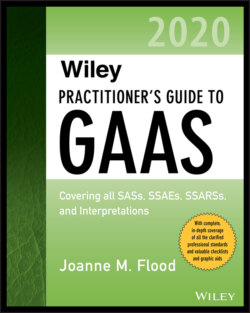Читать книгу Wiley Practitioner's Guide to GAAS 2020 - Joanne M. Flood - Страница 196
Characteristics of the Engagement
ОглавлениеThe following are some examples of characteristics of the engagement:
The financial reporting framework on which the financial information to be audited has been prepared, including any need for reconciliations to another financial reporting framework
Industry-specific reporting requirements, such as reports mandated by industry regulators
The expected audit coverage, including the number and locations of components to be included
The nature of the control relationships between a parent and its components that determine how the group is to be consolidated
The extent to which components are audited by other auditors
The nature of the business divisions to be audited, including the need for specialized knowledge
The reporting currency to be used, including any need for currency translation for the audited financial information
The need for statutory or regulatory audit requirements (for example, OMB Circular A- 133, Audits of States, Local Governments, and Nonprofit Organizations)
The availability of the work of the internal auditor function and the extent of the auditor’s potential direct use of such work
The entity’s use of service organizations and how the auditor may obtain evidence concerning the design or operation of controls performed by them
The expected use of audit evidence obtained in previous audits (for example, audit evidence related to risk assessment procedures and tests of controls)
The effect of IT on the audit procedures, including the availability of data and the expected use of computer-assisted audit techniques
The coordination of the expected coverage and timing of the audit work with any reviews of interim financial information, and the effect on the audit of the information obtained during such reviews
The availability of client personnel and data
